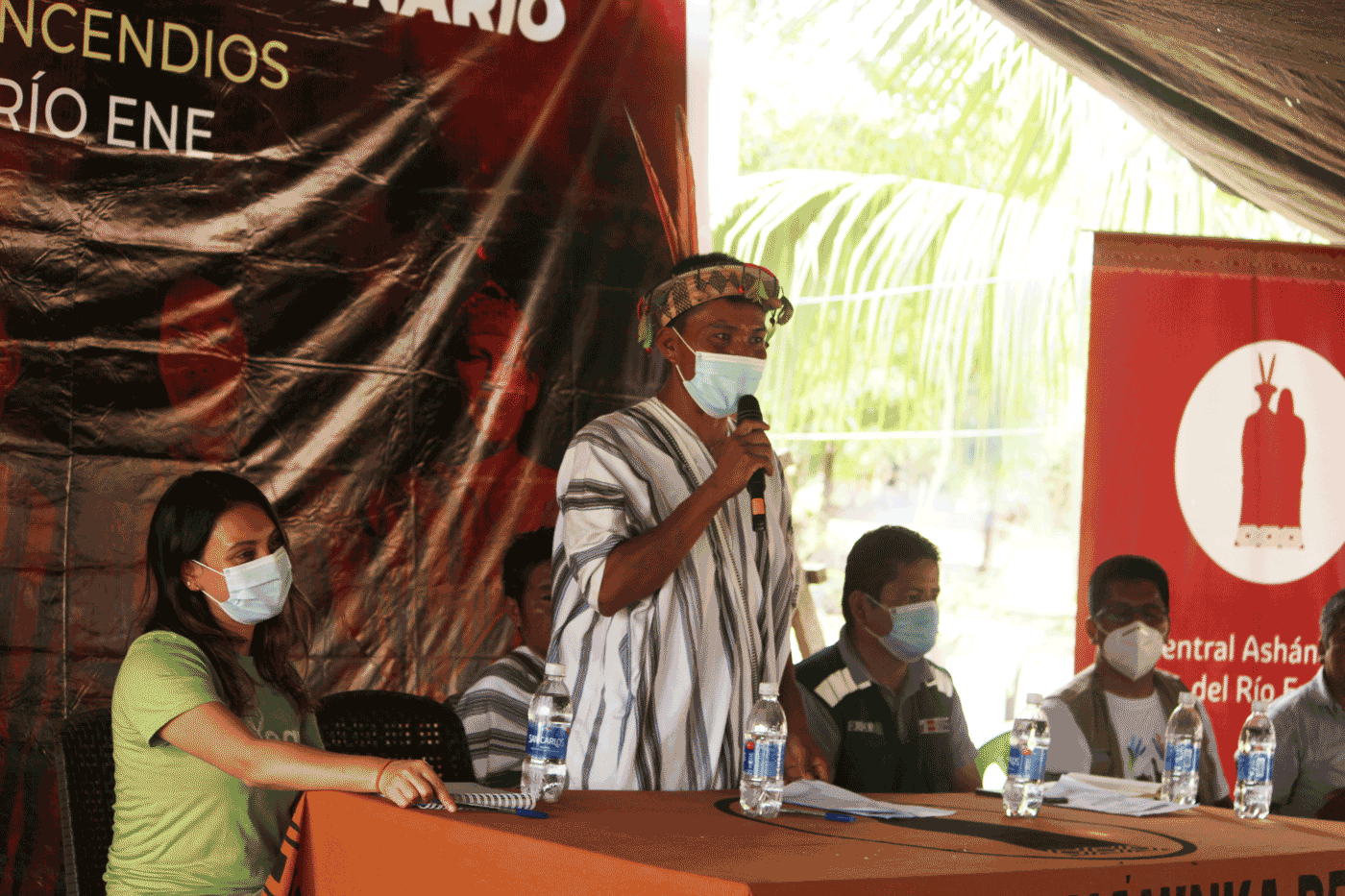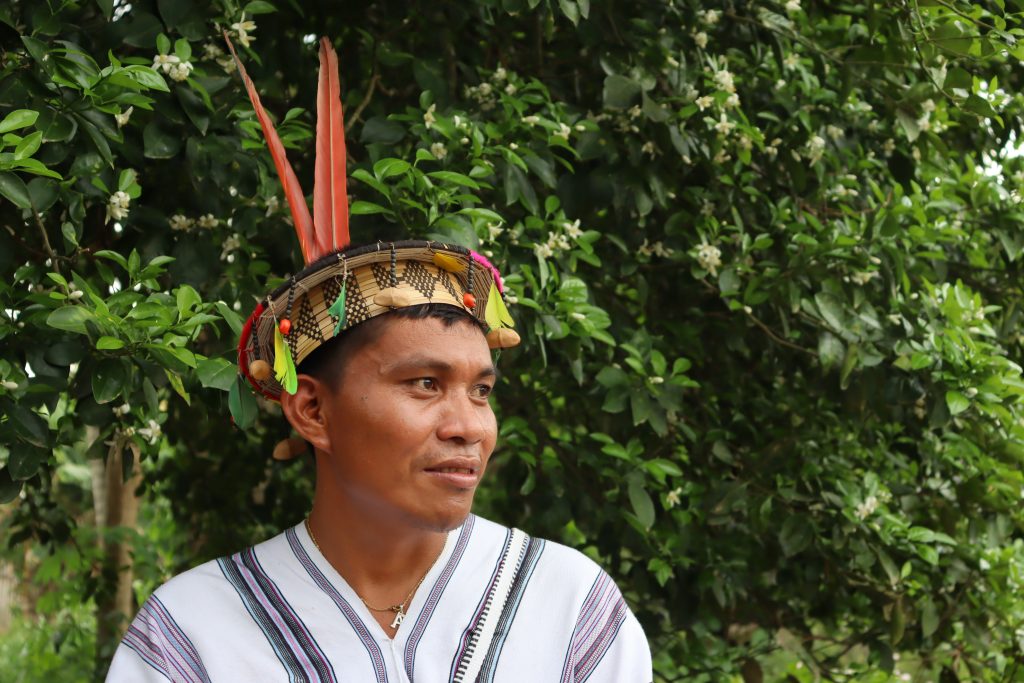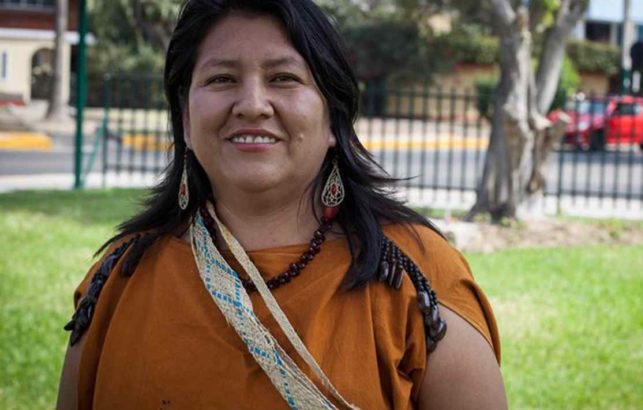
Not just deforestation: the Asháninka & war in the Amazon rainforest.
Threats change, direct action does not.
Words can never fully communicate the lasting impact violence has in people’s lives, their culture and their futures. When you compound war with the harmful legacies of colonialism, missionaries, exploitative industry, drug trafficking, invasions, land grabs and continued marginalisation by governments, it is incredible to bear witness the strength and resilience of the Asháninka people. People we work closely with to keep rainforest their home and the carbon stored in it safe. Climate action that secures a future for all of us.
Angel and the Central Asháninka del Río Ene
Kudos to Angel Pedro Valerio, president of Central Asháninka del Río Ene (CARE), for his feature in the National Geographic Espanol. Indigenous voices need global amplification and we hope to see more people give, and take, platforms to be heard.
We partner with CARE, the largest organisation in the Peruvian Amazon, to address increasing wildfires in the Ene Valley region. In the interview Angel expands on why he fights for justice, the recent history of the Asháninka and why he believes in indigenous-led climate activism.
The Asháninka defend
Protecting rainforest isn’t just about backing the people that live there with basic services, kickstarting sustainable businesses and ensuring food security. The “Ovayerii”, meaning warriors, continue to defend their rainforest against terrorism, drug trafficking, illegal logging and invading settlers.
A war in rainforest
During the 1980s, terrorist organisations and the resulting military clashes impacted Ashánika communities greatly. 6,000 people were murdered, 10,000 displaced and many people were forced to work in labour camps.
“We Asháninka remember so that this tragedy does not happen again.”
– Angel Pedro Valerio.


Angel Pedro Valerio
The pendulum swings back
By the 1990s the war against Sendero Luminoso (The Shining Path) got bloodier and spurred, out of need, the creation of the Ashánika Army. Famed for being mighty, defensive warriors the communities on the Ene and Tambo rivers gathered, united and fought. Armed with shotguns, bows and arrows, the warriors banded together to reclaim their land and rebuild their communities.
“We ambushed the terrorists. Little by little we opened farms to live again in this territory”
– Says Toribio Valerio, a former Asháninka leader who organised the return of his community.
By 1994, when Angel was just a baby, Ene communities had regained their territories with the support of the Peruvian military. That’s not to say that threats have eased. In fact the VRAEM (the area where the Apurimac, Ene and Mantaro rivers meet, and where we work) still has military presence to defend against drug traffickers and any revivals of the Shining Path legacy.
Self-defence committees are still needed too. They continue to maintain order and security in Asháninka villages. From monitoring and confronting traffickers, escorting suspected settlers out, to using drones to examine the advance of fires. Constant vigilance is needed, patrols that are laced with danger and risk.
We Back Indigenous activists
“Global Witness indicates that Peru is among the 10 most dangerous areas on the planet for defenders of land and water”[1]This is how the Ashaninka nation fights against drug trafficking to preserve its territory in Peru. By Andrea Fisher for National Geographic. (2022)
– Andrea Fisher for National Geographic.
This life threatening work is not exclusive to the Ashánika, Peru or the Amazon. Indigenous activists are being killed the world over (1,700 in the last ten years is thought to be a underestimate), fighting to protect their home and all our lives. Indigenous communities occupy more than half the planet’s land and have protected it for thousands of years and yet still are not the owners of it – owning just 10% legally.
Governments don’t always recognise rightful claims to land and can override any way of life established, any culture or community. Getting legally binding protective land rights can be extremely lengthy (30+ years), complex, expensive and disruptive for families creating a great emotional toll. Extractive industries on the other hand have been known to obtain land rights in just 30 days.
“The greatest danger we feel is that the state, which is supposed to defend us, betrays us.”
– Ruth Buendía, Asháninka leader.


Ruth Buendía, Asháninka leader
What you can do about exploitation
Standing with Angel and the next generation of Indigenous activists is what the world needs more of. If we want to see rainforest and the benefits it offers the world, from food, medicine and water, to its stabilisation of weather and biodiversity we must act.
Back Angel, back CARE & back the ASHÁNINKA to protect all life by protecting rainforest.
